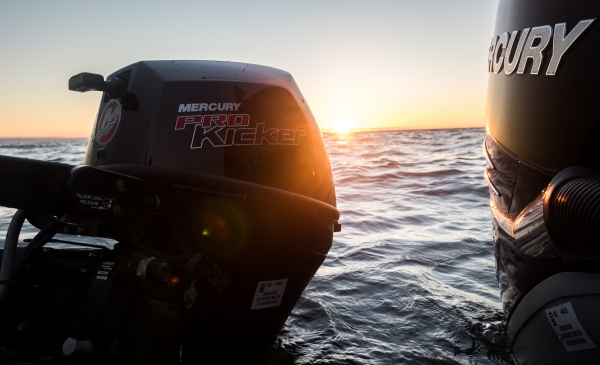Some of the manufacturers make whats called a High Thrust model. These motors are built with a gearcase that has a lower gear ratio and are equipped with a larger diameter propeller. This provides the thrust and control that is desired for running your boat at slower speeds. High Thrust models typically start at 9.9hp which is generally the horsepower size most boaters go with for a kicker. Anything under that size is going to be a standard non-high-thrust model. These motors are just as commonly run as the high thrust models for a kicker.
One thing to think about is where you are planning on mounting your kicker motor. Boats designed for things such as walleye fishing will have a transom that is set up for the addition of a kicker motor. These transoms allow you to bolt the kicker right next to your primary motor with the ability to fully tilt and trim the motor. Other rigs that are larger such as your big lake boats or salt water models will need a bracket bolted to the transom to hang the kicker on. These brackets are spring loaded so that the motor can be raised and lowered.
Kickers come in both tiller steer and remote steer models. If you go with a tiller steer model, the captain will have to do all of the starting, steering, and throttle at the back of the boat where the kicker is installed. There is an option where you could link the two motors together so that you could set the desired throttle on the kicker and steer with the primary motor. This way all of the steering is done at the helm, but you will still have to go back to the kicker to control the speed if need be. Remote steer models will be controlled completely at the helm. This means you will have a separate throttle and shift control box for the kicker at the helm and all of the steering is done by either using the primary motor as a rudder or linking the two motors together so they turn simultaneously.
When determining the right shaft length for your boat you are going to want the cavitation plate of the kicker even with the bottom of the boat. If your boat has a V-shaped hull, the shaft length needs to match the transom height at the mounting location rather than the maximum transom height.


